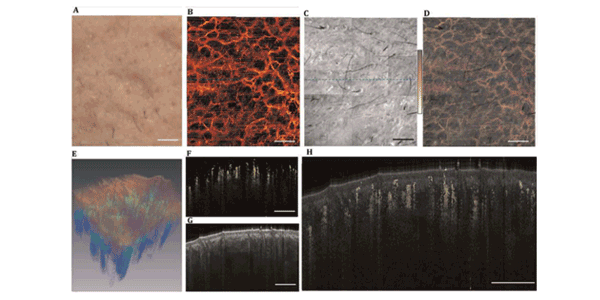Researchers in Professor Ruikang Wang’s lab have demonstrated the capabilities of optical coherence tomography (OCT) -based microangiography in detecting high-resolution, three-dimensional structural and microvascular features of human skin affected by acne. The research team presents the feasibility of using this imaging technique to detect changes in microvasculature during acne lesion development and introduces a microvasculature-based biomarker to aid in the treatment of acne.
The researchers published their findings in a paper published in the March 2015 issue of Lasers in Surgery and Medicine, the official journal of the American Society for Laser Medicine & Surgery, Inc. Their piece, entitled “High resolution imaging of acne lesion development and scarring in human facial skin using OCT-based microangiography”, was selected as the journal’s ‘Editor’s Choice’ article of the month.
Acne is a common and distressing skin disease that affects the majority of the population between ages 11 and 30, and can impact quality of life in those affected. Clinicians employ various methods to assess the severity of acne, however, no single grading system has been universally accepted. The UW research team believes new research tools are needed to better understand the natural history, subtypes and triggers of acne, and to improve and compare treatment options. They hope their technique expands upon the expanding popularity of OCT in dermatology, providing an improved method of understanding, managing and treating acne. Their work is also promising to facilitate clinical trials in the treatment and diagnosis of other skin diseases.


